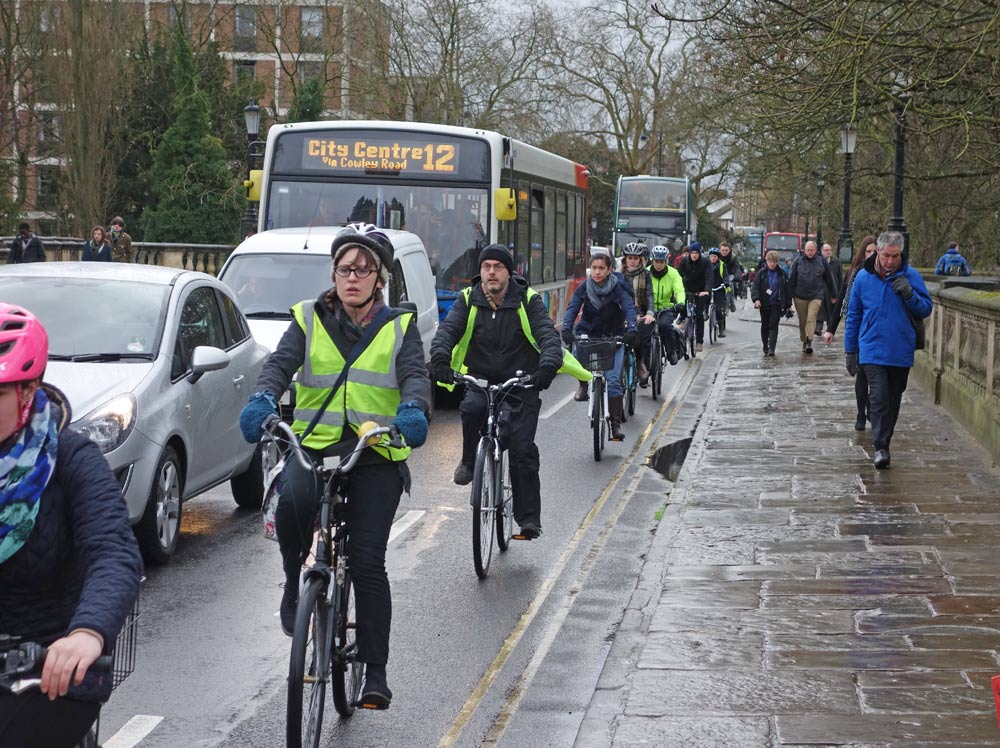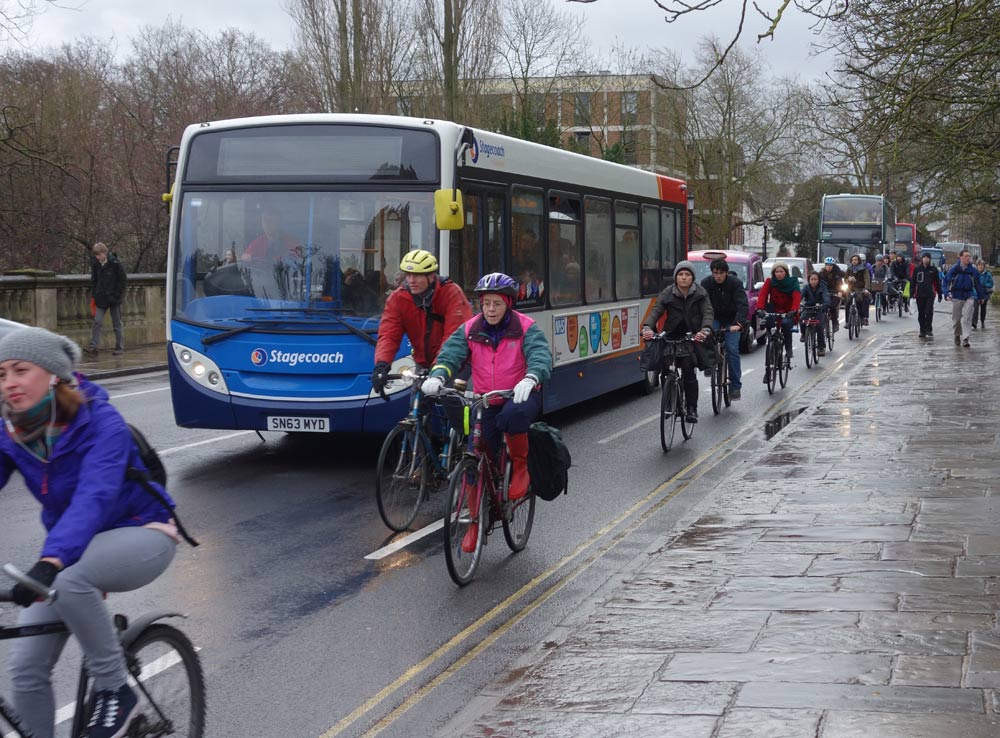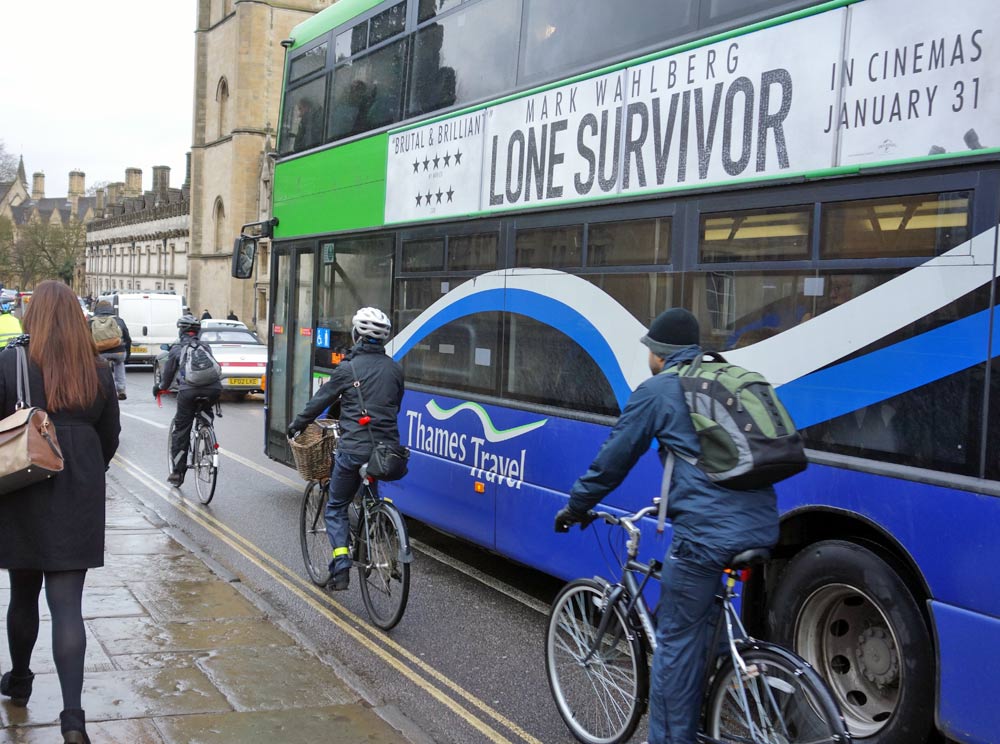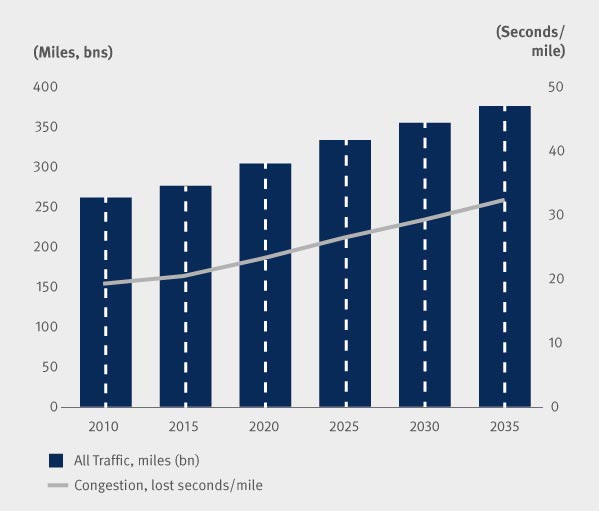
Congestion in Oxford encourages people to take an alternative. Cycling into the centre is significantly quicker at rush hour. Will the forecast increase in congestion lead to a rise in cycling rates in the UK?

No one likes sitting in a traffic jam, cycle lanes help avoid the worst of the congestion.

Traffic congestion costs include:
- time lost
- increased vehicle operating costs (brakes, fuel costs)
- Stress of sitting in traffic jams
- There are both internal costs (to driver) plus external costs to other road users and society.
The CBI estimate that traffic congestion costs the UK economy £20 billion a year. (link) Other estimates of the costs of congestion widely significantly, but you don’t need to be an economist to realise traffic jams going nowhere are an inefficient use of resources.
The big concern is that congestion is expected to increase over the next 20 years, due to rising population and increased use of cars.
Road use and time lost due to congestion

In 2010, an estimated 19 seconds per mile were lost due to congestion.
By 2035, this is estimated to rise to 32 seconds per mile. This is a 68% increase in congestion from today’s levels.
Solutions to congestion
1. Build more roads. This has been the primary objective of government transport policy from the 1960s to 2000s. The number of roads has increased. But, the limitations of this approach include:
